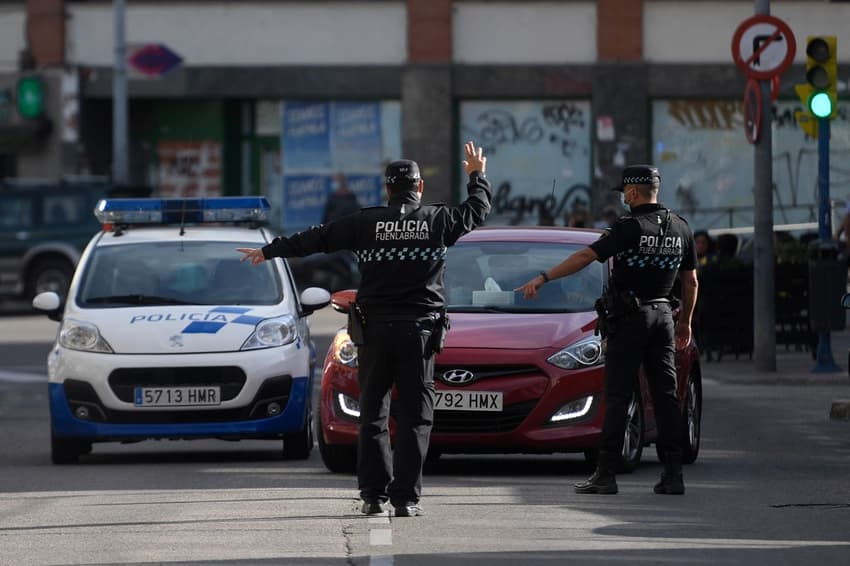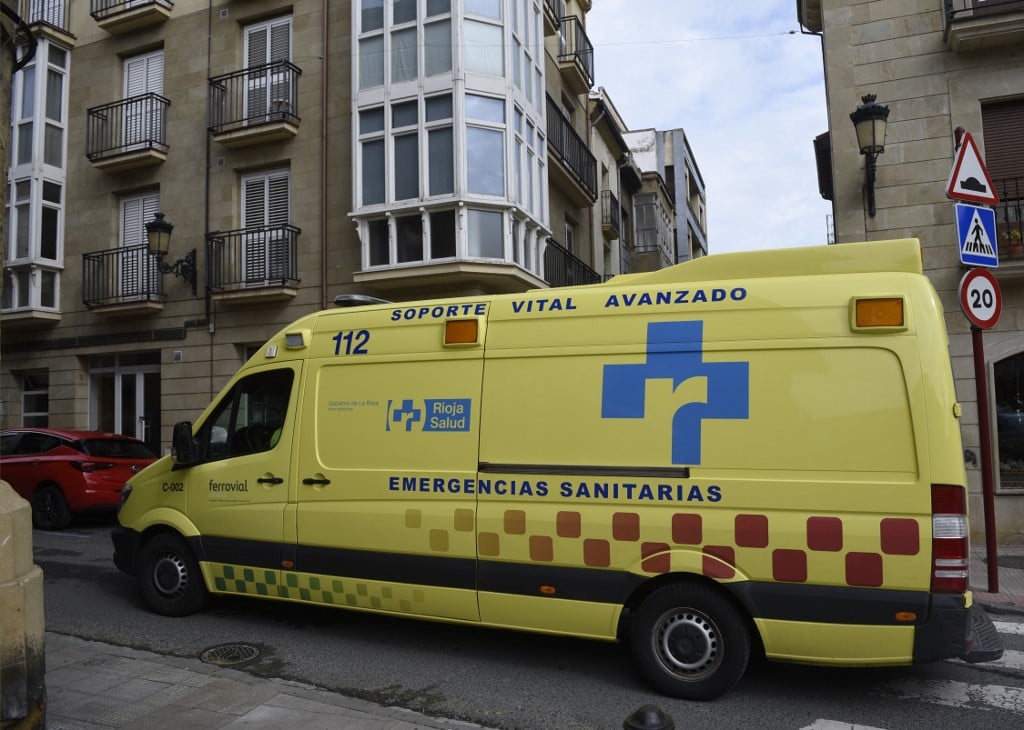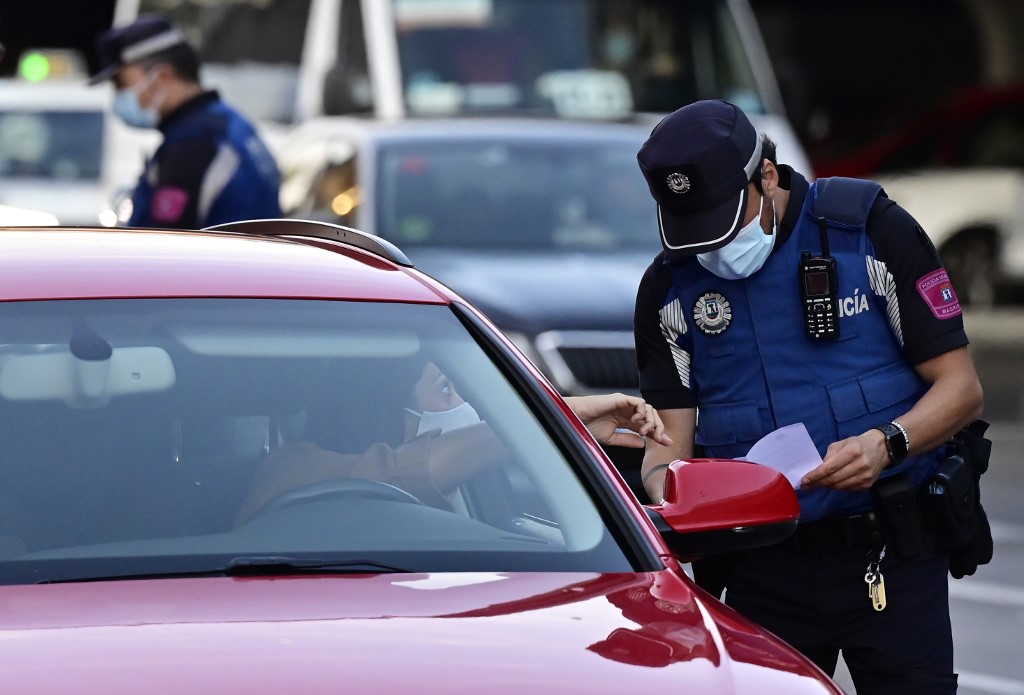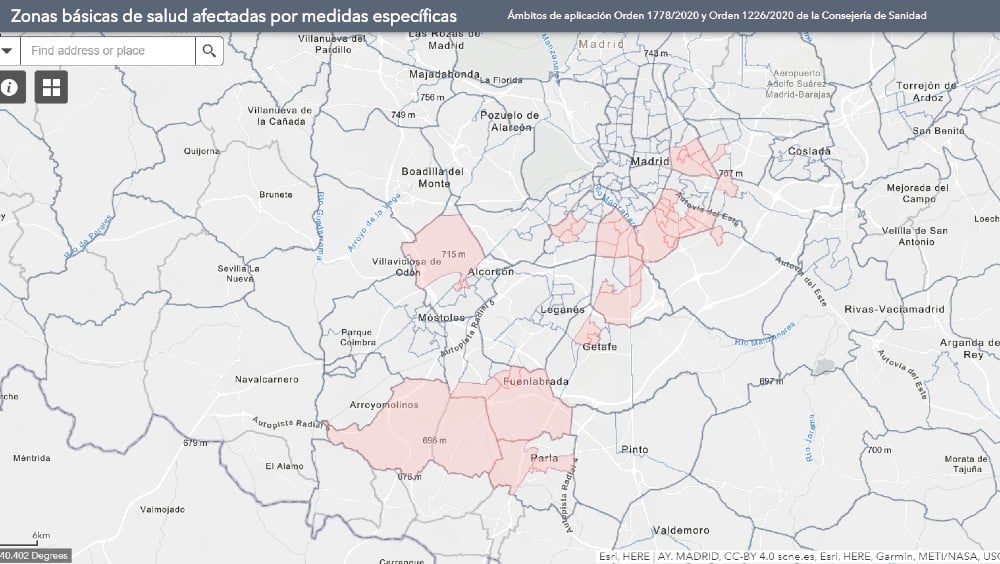Rules, permits, fines: What you need to know if you live within Madrid’s new confinement zones

Madrid authorities have imposed restrictions in 45 districts of the region. Here's what you need to know about what it means for daily life.
The partial lockdown will affect more than one millionof Madrid’s residents from eight different municipalities across the region after another eight zones were on Friday added to the list of confined areas.
LATEST: Madrid extends restrictions to another eight zones but ignores calls for full lockdown
Zonas basicas de Salud

You may not have been aware of it but beyond the borders that define municipalities, districts and neighbourhoods, Madrid is also divided into “zonas basicas de salud” of which there are 286 distinct areas established around health centres to serve local populations.
A total of 45 across the region have so far been designated trouble spots, with eight new zones introducing restrictions on Monday 28th September from the 37 that fell under the new “confinement rules” a week earlier.
Without visible borders it is up to each resident to discover the limitations of their “health zone” something which is possible by using the map provided by the Madrid regional government.
These are the zones where the new restrictions apply:
Carabanchel: Puerta Bonita, Vista Alegre and Guayaba.
Usera: Almendrales, Las Calesas, Zofío, Orcasur and San Fermín.
Villaverde: San Andrés, San Cristóbal, El Espinillo and Los Rosales.
Villa de Vallecas
Puente de Vallecas: Entrevías, Martínez de la Riva, San Diego, Numancia, Peña Prieta, Pozo del Tío Raimundo, Ángela Uriarte, Alcalá de Guadaira and Federica Montseny.
Ciudad Lineal: Doctor Cirajas, Ghandi, Daroca and La Elipa.
Fuenlabrada: Alicante, Cuzco and Francia.
Parla: San Blas and Isabel II.
Getafe: Las Margaritas and Sánchez Morate;
San Sebastián de los Reyes: Reyes Católicos.
Alcobendas: Chopera and Miraflores.
The municipalities of Humanes de Madrid and Moraleja de Enmedio are also restricted zones.
UPDATE: Eight more health zones were added to the list on Friday September 25th with restrictions coming into force from Monday September 28th.
These new zones are:
Vicálvaro-Artilleros (Vicálvaro), García-Noblejas (San Blas-Canillejas), Rafael Alberti and Campo de la Paloma (Puente de Vallecas), Orcasitas (Usera) in Madrid Capital, and Panaderas (Fuenlabrada), Doctor Trueta and Miguel Servet (Alcorcón).
You can check which “zona basica de salud” covers where you live using the interactive map HERE.
Si tienes dudas, consulta este mapa interactivo de la @ComunidadMadrid para conocer las calles afectadas por las restricciones que han entrado hoy en vigor#CoronavirusMadrid #siempreconmascarillahttps://t.co/NnYOpD5Jcz
— SaludMadrid (@SaludMadrid) September 21, 2020
How will the new restrictions be policed?

Local police officers, supported by the National Police and the Civil Guard, will be in place to ensure that residents of the affected areas respect the rules.
Authorities said that a total of 200 municipal officers will be monitoring the Spanish capital, setting up more than 60 checkpoints that will be rotated over the next two weeks.
Anyone caught in breach of the new restrictions could face a fine of between €600 and €600,000.
New rules
Basically, you must stay within your restricted zone unless you have to travel outside it for work, study, or take your children to school. You can also leave if you have to visit dependents or if you need to seek medical attention or attend a legal or administrative appointment.
Shops and restaurants will remain open but at half the capacity that they are normally allowed and they must shut by 10pm.
All social groups must not exceed six people and that is across the whole of the region of Madrid, not just the restricted areas.
Plus the within restricted zones parks and public spaces such as playgrounds are closed.
Cinemas, theatres, libraries and sports centres will remain open but limited to 50 percent of capacity.
Home delivery is allowed.
Permits
People who need to exit or enter a restricted zone must carry a form which they can download from the internet and fill out in order to justify their trip. These must be carried at all times and shown if required when stopped by police at the checkpoints.
They will have to fill out with ID number, address, place of work and reason for movement and must be signed by one's employer.
They can be downloaded HERE. or by clicking through on tweet below.
La @ComunidadMadrid elabora un modelo orientativo de certificado para justificar la entrada y salida de las zonas afectadas por la Orden que entra en vigor el próximo lunes, por razones laborales o profesionales.
Puedes descargarlo ?https://t.co/vCYizDB3dZ#CoronavirusMadrid
— SaludMadrid (@SaludMadrid) September 20, 2020
READ ALSO:
Comments
See Also
The partial lockdown will affect more than one millionof Madrid’s residents from eight different municipalities across the region after another eight zones were on Friday added to the list of confined areas.
LATEST: Madrid extends restrictions to another eight zones but ignores calls for full lockdown
Zonas basicas de Salud

You may not have been aware of it but beyond the borders that define municipalities, districts and neighbourhoods, Madrid is also divided into “zonas basicas de salud” of which there are 286 distinct areas established around health centres to serve local populations.
A total of 45 across the region have so far been designated trouble spots, with eight new zones introducing restrictions on Monday 28th September from the 37 that fell under the new “confinement rules” a week earlier.
Without visible borders it is up to each resident to discover the limitations of their “health zone” something which is possible by using the map provided by the Madrid regional government.
These are the zones where the new restrictions apply:
Carabanchel: Puerta Bonita, Vista Alegre and Guayaba.
Usera: Almendrales, Las Calesas, Zofío, Orcasur and San Fermín.
Villaverde: San Andrés, San Cristóbal, El Espinillo and Los Rosales.
Villa de Vallecas
Puente de Vallecas: Entrevías, Martínez de la Riva, San Diego, Numancia, Peña Prieta, Pozo del Tío Raimundo, Ángela Uriarte, Alcalá de Guadaira and Federica Montseny.
Ciudad Lineal: Doctor Cirajas, Ghandi, Daroca and La Elipa.
Fuenlabrada: Alicante, Cuzco and Francia.
Parla: San Blas and Isabel II.
Getafe: Las Margaritas and Sánchez Morate;
San Sebastián de los Reyes: Reyes Católicos.
Alcobendas: Chopera and Miraflores.
The municipalities of Humanes de Madrid and Moraleja de Enmedio are also restricted zones.
UPDATE: Eight more health zones were added to the list on Friday September 25th with restrictions coming into force from Monday September 28th.
These new zones are:
Vicálvaro-Artilleros (Vicálvaro), García-Noblejas (San Blas-Canillejas), Rafael Alberti and Campo de la Paloma (Puente de Vallecas), Orcasitas (Usera) in Madrid Capital, and Panaderas (Fuenlabrada), Doctor Trueta and Miguel Servet (Alcorcón).
You can check which “zona basica de salud” covers where you live using the interactive map HERE.
Si tienes dudas, consulta este mapa interactivo de la @ComunidadMadrid para conocer las calles afectadas por las restricciones que han entrado hoy en vigor#CoronavirusMadrid #siempreconmascarillahttps://t.co/NnYOpD5Jcz
— SaludMadrid (@SaludMadrid) September 21, 2020
How will the new restrictions be policed?

Local police officers, supported by the National Police and the Civil Guard, will be in place to ensure that residents of the affected areas respect the rules.
Authorities said that a total of 200 municipal officers will be monitoring the Spanish capital, setting up more than 60 checkpoints that will be rotated over the next two weeks.
Anyone caught in breach of the new restrictions could face a fine of between €600 and €600,000.
New rules
Basically, you must stay within your restricted zone unless you have to travel outside it for work, study, or take your children to school. You can also leave if you have to visit dependents or if you need to seek medical attention or attend a legal or administrative appointment.
Shops and restaurants will remain open but at half the capacity that they are normally allowed and they must shut by 10pm.
All social groups must not exceed six people and that is across the whole of the region of Madrid, not just the restricted areas.
Plus the within restricted zones parks and public spaces such as playgrounds are closed.
Cinemas, theatres, libraries and sports centres will remain open but limited to 50 percent of capacity.
Home delivery is allowed.
Permits
People who need to exit or enter a restricted zone must carry a form which they can download from the internet and fill out in order to justify their trip. These must be carried at all times and shown if required when stopped by police at the checkpoints.
They will have to fill out with ID number, address, place of work and reason for movement and must be signed by one's employer.
They can be downloaded HERE. or by clicking through on tweet below.
La @ComunidadMadrid elabora un modelo orientativo de certificado para justificar la entrada y salida de las zonas afectadas por la Orden que entra en vigor el próximo lunes, por razones laborales o profesionales.
— SaludMadrid (@SaludMadrid) September 20, 2020
Puedes descargarlo ?https://t.co/vCYizDB3dZ#CoronavirusMadrid
READ ALSO:

Join the conversation in our comments section below. Share your own views and experience and if you have a question or suggestion for our journalists then email us at [email protected].
Please keep comments civil, constructive and on topic – and make sure to read our terms of use before getting involved.
Please log in here to leave a comment.